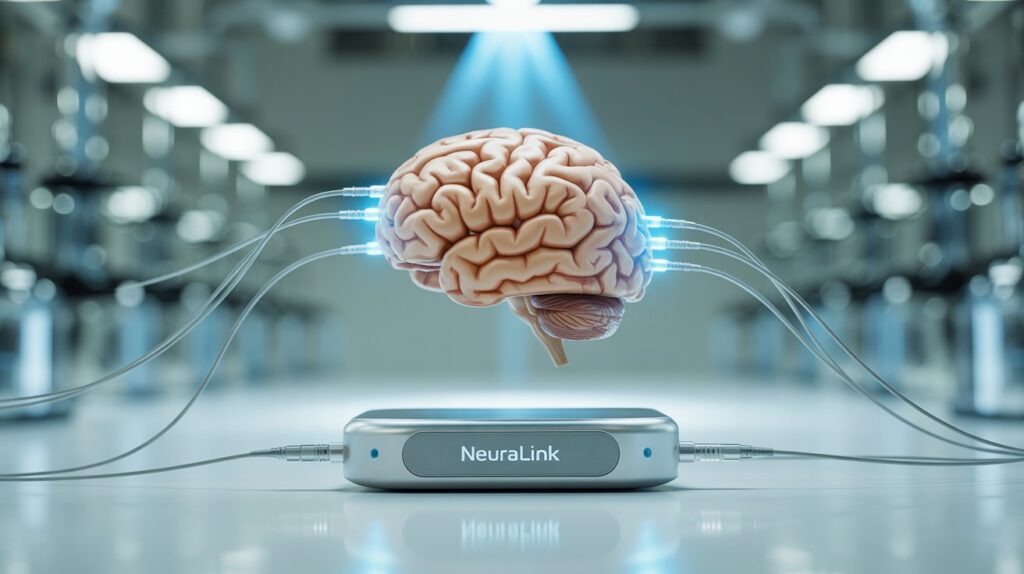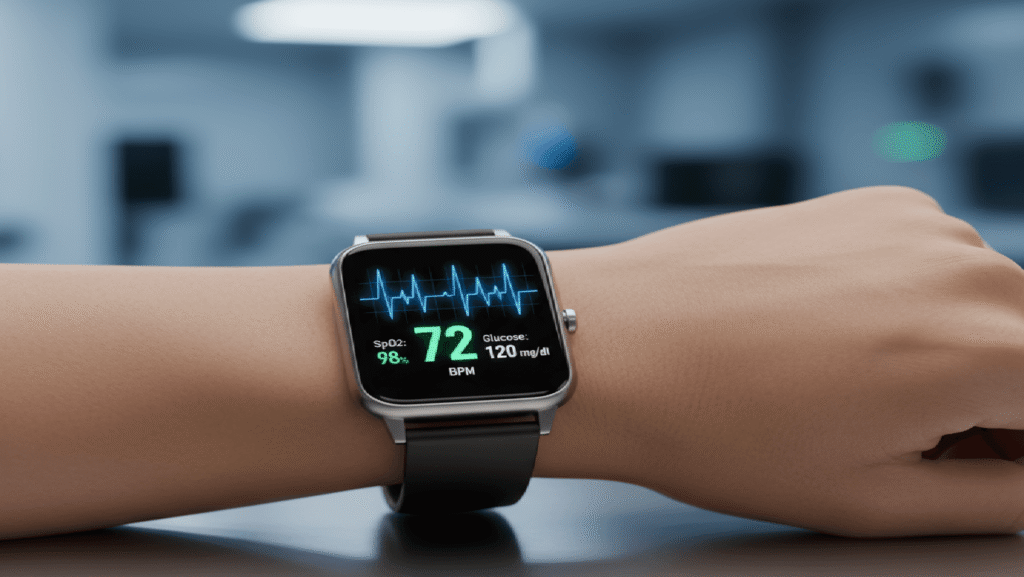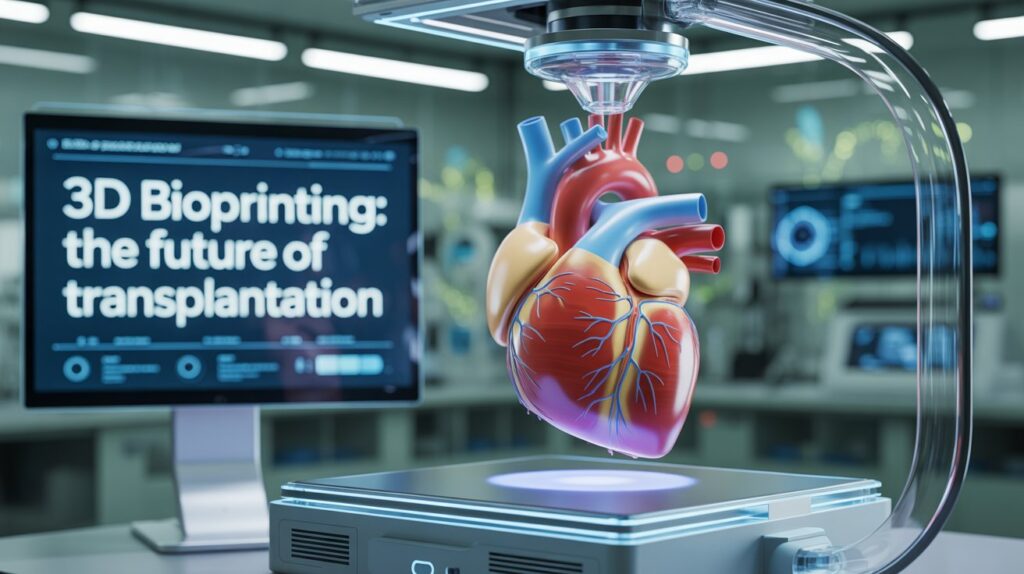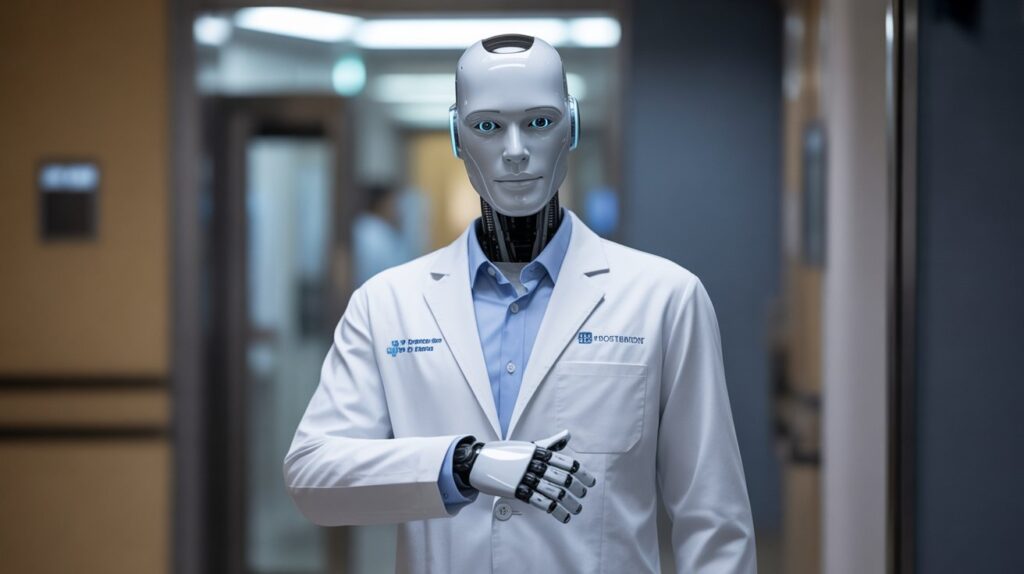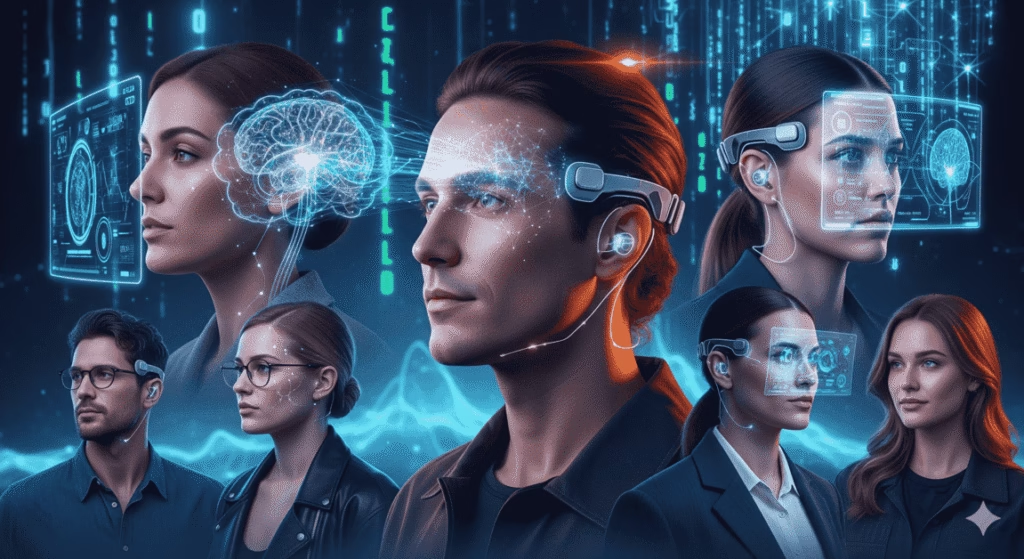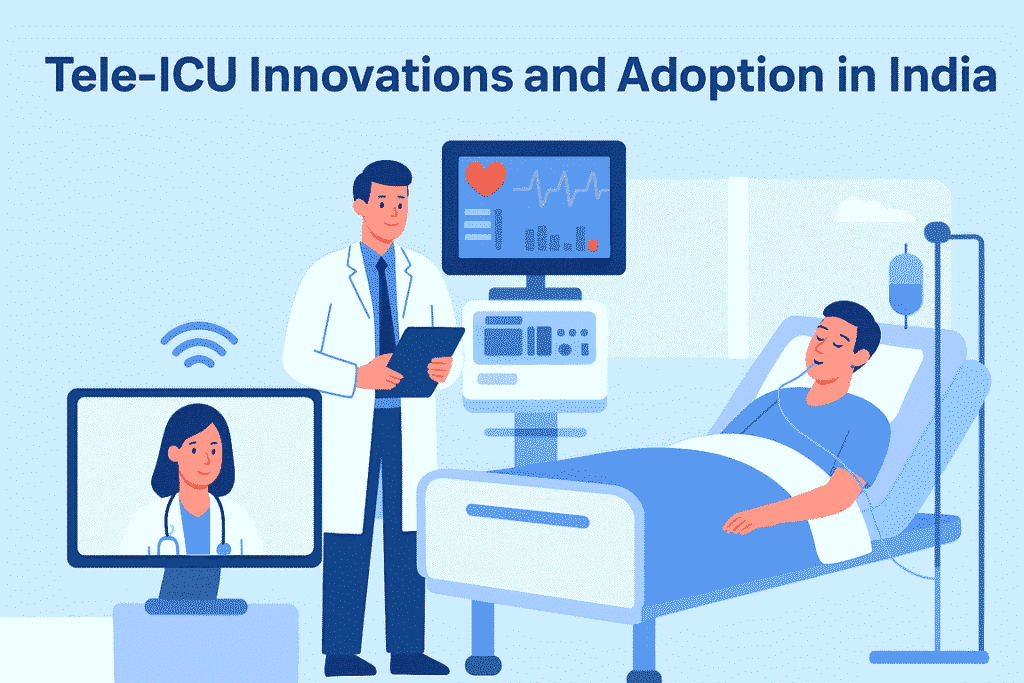Introduction
Neuralink, the visionary neurotechnology company founded by Elon Musk, is at the frontier of connecting the human brain directly with computers. As of 2025, this revolutionary brain-computer interface (BCI) technology has advanced into human trials, promising to transform medical treatments and redefine how we interact with technology. This article explores Neuralink’s breakthrough technology, medical applications, ethical debates, and future potential.
What Is Neuralink? A Brief Overview
Founded in 2016, Neuralink aims to develop high-bandwidth BCIs capable of creating seamless communication pathways between the brain and digital devices. Its flagship device, “The Link,” is a small implant embedded in the skull. It contains ultra-thin, flexible electrode threads that penetrate brain tissue, enabling precise detection and stimulation of neural activity.
How Neuralink’s Brain Chip Works
- The Link is implanted using a robotic surgical system –R1 Robot that inserts over 1,000 hair-thin electrodes into targeted brain regions while avoiding blood vessels.
- These electrodes record electrical impulses from neurons and wirelessly transmit data to external processors via Bluetooth.
- Onboard AI algorithms decode neural signals and translate them into actionable commands for computers or prosthetic devices.
- The system continuously learns from each user’s unique brain patterns to improve accuracy and responsiveness.
Medical Breakthroughs and Applications
Neuralink’s foremost medical applications include:
- Restoring Mobility: Enabling paralyzed patients to control computers and prosthetics.
- Speech Restoration: Assisting those with speech impairments to communicate digitally.
- Vision Enhancement: Research is underway to restore vision via visual cortex stimulation, known as “Blindsight.”
- Neurological Disorder Treatment: Potential therapies for Parkinson’s disease, ALS, and dementia.
Neuralink in Human Trials: Latest Results
Neuralink received FDA approval for human trials in 2023. By October-2025, 12 patients had successfully undergone implantation, demonstrating breakthrough capabilities such as controlling digital devices and playing chess with thought alone. Early trial participants report enhanced independence and communication ability—especially significant for individuals with severe paralysis or neurological disorders.
Neuralink’s initial clinical trials focus on its PRIME Study, an early feasibility study for the N1 implant and R1 surgical robot. This study aims to assess the safety and functionality of the brain-computer interface (BCI) in individuals with paralysis (quadriplegia from spinal cord injury or ALS). Participants use the implant to control external devices like computers or smartphones through thought alone. Neuralink has also initiated a second trial in Great Britain and a separate trial for visual prosthetics
PRIME Study (United States)
- Purpose: To evaluate the safety of the N1 implant and R1 robot and the initial functionality of the BCI in people with quadriplegia or tetraplegia.
- Participants: Adults with quadriplegia due to a cervical spinal cord injury or with amyotrophic lateral sclerosis (ALS).
- Procedure: A surgical robot (R1) is used to implant microscopic threads with 1024 electrodes into a brain region that plans movement.
- Functionality: The N1 implant, once in place, wirelessly records and transmits brain signals, allowing users to control external devices with their thoughts.
- Progress: The first participant, who has been using the device since January 2024, has reported high usage, with some participants using the device for up to 50 hours per week.
Clinical Trial in the UK: Neuralink has begun a new clinical study in Great Britain to test its brain chips in another location.
Visual Prosthetics Trial: Neuralink is involved in a separate, UCSB-led trial focused on visual prosthetics, aiming to develop technology that restores sight.
Canadian Trial: In late 2024, Neuralink received approval to begin its PRIME study trial in Canada, focusing on individuals with cervical spinal cord injury or ALS.
Neuralink’s first patient: Noland Arbaugh
Neuralink’s 5th patient: RJ Tanner
Future Visions: AI Integration and Brain-to-Brain Communication
Neuralink’s long-term vision extends beyond medical restoration toward high‑bandwidth cognition where neural signals interface directly with AI systems for thought‑level input and retrieval, reducing today’s bottlenecks of speech and typing to near real‑time concept exchange. The roadmap publicly discussed in 2025 outlines staged expansions from motor control to speech‑cortex decoding and visual prosthetics, then to multi‑implant, multi‑region systems with tens of thousands of channels per device, enabling richer information flow between brains and machines.
In this trajectory, brain‑to‑brain communication emerges as a logical extension: once silent speech and intent can be decoded and transmitted, the same pipelines could relay concepts to other augmented users, forming foundations of “consensual “telepathy” for collaboration and assistive communication.
Memory augmentation is envisioned as secure externalization of thoughts—storing, indexing, and retrieving personal information via neural I/O—blending biological memory with digital knowledge bases under user control. Company leaders have framed 2026–2028 goals as increasing channel counts, adding simultaneous implants, and piloting AI‑assisted interfaces, culminating in early demonstrations of human‑AI symbiosis once safety and efficacy thresholds are met.
Practical near‑term steps include speech‑decoding trials for people with aphasia or anarthria, a milestone that would validate bidirectional language interfaces and accelerate broader cognitive applications toward Musk’s long‑stated aim of aligning human intelligence with advanced AI.
Risks, Ethics, and Societal Considerations
Despite its promise, Neuralink raises important ethical, legal, and social questions:
- Surgical and Device Safety: Risks include brain inflammation, hardware failure, and long-term implant effects.
- Privacy and Security: How to protect sensitive neural data from hacking or misuse.
- Animal Testing Controversies: Calls for transparency in primate experiments.
- Societal Impact: Concerns about equitable access and cognitive enhancement fairness.
Conclusion
Neuralink stands at the intersection of health technology, neuroscience, and artificial intelligence. Its rapid progress is positioning it to revolutionize treatment for neurological diseases while raising profound ethical questions about the future of human cognition and digital integration. For health technology enthusiasts and medical professionals, understanding Neuralink’s journey is key to grasping tomorrow’s medical landscape.
For readers interested in the transformative potential of brain-computer interface technology beyond Neuralink, it is worth exploring its revolutionary applications in neurorehabilitation. Recent advances have enabled ALS patients with severe speech impairments to regain near-natural communication through BCIs that decode neural signals into speech with remarkable accuracy. Additionally, BCIs have helped patients with paralysis regain control of limb movement with Exoskeleton through direct brain-machine control, significantly improving quality of life. Learn more about these groundbreaking developments in our dedicated article on brain-computer interfaces for speech rehabilitation and motor restoration in paralyzed patients.
Frequently Asked Questions
What are the key benefits and risks?
Benefits center on restoring lost function and enhancing human capability; risks involve surgery complications and data privacy issues.
Who is eligible for Neuralink implants?
Currently, clinical trials target patients with paralysis and neurological disorders; future expansions may include broader cognitive applications.
How does Neuralink compare with other BCIs?
Its wireless tech and high electrode density offer advantages over existing wired systems.
How long does a Neuralink implant last before replacement?
Longevity depends on battery cycles, hermetic sealing, and electrode signal stability; public roadmaps emphasize increasing channel survival and long-term impedance stability, but definitive replacement intervals have not been published as trials are ongoing.
Can the device be explanted or upgraded without major surgery?
Neuralink’s studies discuss surgical robot precision and iterative hardware improvements; while explant/upgrade pathways are implied by clinical governance, specific minimally invasive upgrade protocols are not yet public due to trial-stage constraints.
What happens if threads retract or a subset of electrodes fail?
Early human experience included thread retraction events with mitigation strategies in subsequent participants; fallback decoding can rely on surviving channels while surgical and firmware changes aim to reduce recurrence.
How is neural data secured end to end?
Company materials and expert commentary highlight wireless telemetry with medical-grade safeguards, but full cryptographic specifications and governance frameworks are not publicly detailed during trials, making institutional review and DSMB oversight key interim protections.
Who owns neural data and how can participants revoke access?
Ethical analyses emphasize explicit consent, storage limits, and withdrawal mechanisms; sponsors and trial sites typically steward data under IRB protocols, with participant rights defined by consent forms rather than broad consumer policies at this stage.
What independent oversight is in place beyond the FDA?
FDA oversight is complemented by IRBs and Data Safety Monitoring Boards described in trial design disclosures, adding third‑party adjudication of adverse events and safety audits.
Who exactly qualifies right now, and does caregiver support matter?
Active recruitment focuses on adults with severe paralysis or speech impairment; inclusion criteria often require reliable caregiver support and stable health status suitable for neurosurgery.
What will it cost patients if commercialized, and will insurance cover it?
No official price exists; third‑party estimates cite device and surgical costs in the tens of thousands with potential insurer variation, which will hinge on long‑term outcomes and reimbursement codes post‑approval.
How long does calibration take before functional use?
Prime‑stage protocols describe repeated calibration over weeks to improve decoding accuracy, moving from cursor control toward higher‑bandwidth tasks like speech decoding.
Will intrusive or irrelevant thoughts trigger unintended actions?
Practical decoders focus on task‑specific neural patterns and intentional control schemes, reducing spurious activations; ethics and UX commentaries still flag this as an active design and training consideration.
Can users switch between multiple devices (phone, PC, wheelchair) seamlessly?
Roadmaps and demos suggest expanding device interoperability with wireless stacks; multi‑endpoint handoff is a target but not a standardized consumer feature during first‑in‑human trials.
What are the near‑term new indications after cursor control?
Speech decoding trials for severe speech impairment and vision restoration programs are repeatedly cited as next clinical frontiers in 2025 updates and reporting.
Will enhancement for healthy users be allowed after therapeutic use?
Scholarly reviews highlight Neuralink’s dual aim of restoration now and human potential later, raising governance debates about if/when enhancement should be permitted beyond therapy.
Will there be multiple implant sites per person in future versions?
Public talks and roadmaps discuss scaling channel counts and multi‑region coverage as a step toward higher‑bandwidth interfaces for complex tasks.

